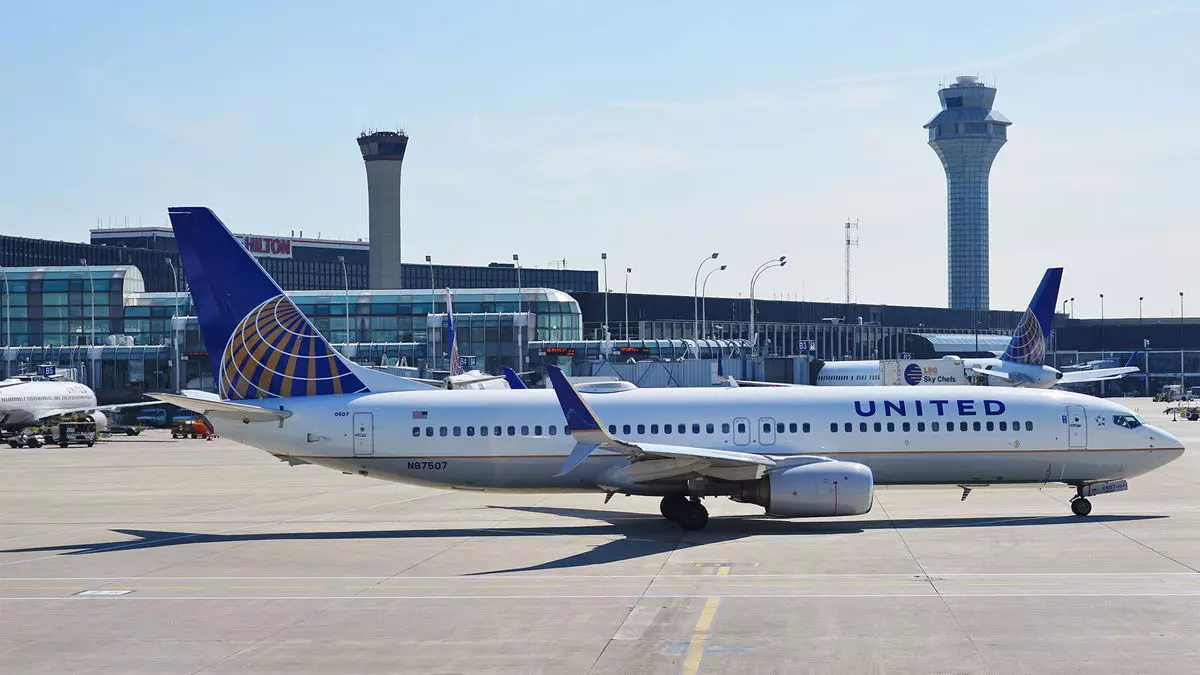In a high-stakes showdown that could define air travel dynamics for years to come, American Airlines is embroiled in a legal dispute with the city of Chicago and United Airlines. At the heart of this contention is a critical and limited resource: gate space at Chicago O’Hare, recognized as the fourth-busiest airport in the United States. The negotiations and court rulings surrounding gate access could tilt the competitive landscape significantly, reshaping who dominates the skies from one of the nation’s most pivotal travel hubs.
Currently, United Airlines controls 90 gates, leaving American Airlines with 71. The potential redistribution of these gates is alarming for American, as a proposed city decision could result in United receiving five additional gates while American loses four. This move, if implemented, would amplify United’s already substantial foothold at O’Hare, an airport that has become a battleground for supremacy among regional carriers. As United has made a dramatic comeback post-pandemic, the impact of lost gate space could be pivotal for American’s operations.
Understanding the Redistribution Process
The mechanics of gate access redistribution at O’Hare are driven by a formula based on the utilization rates of each airline’s gates during the previous year. The anticipated transition, ignited by a lawsuit filed by American, is set to take effect this October. Under the current conditions, United could see its gate count expand further as the city evaluates each carrier’s performance. Analysts in the airline industry, such as Brett Snyder from the Cranky Flier blog, have speculated that a net gain of ten gates for United would solidify its position and complicate American’s ability to thrive in the competitive milieu.
The stakes are not merely statistical; they represent the broader contest between the two airlines, each vying for passenger loyalty and operational efficiency. As United established a strong recovery trajectory after the pandemic, its growing seat count at O’Hare—from a mere 9.3 million to a commanding 13 million—poses a formidable challenge for American. The decreasing number of passengers that American has served in recent years has raised alarms about their future viability in one of the most lucrative air travel markets.
Timing and Its Implications
American Airlines has taken issue with the timing of the city’s decision to initiate the gate reevaluation process, arguing that it contravenes a lease agreement negotiated back in 2018. This agreement, which aimed to prepare for upgrades and expansions at O’Hare, contains crucial provisions about the timeline for gate assessments. American asserts that it was promised a full year to ramp up its gate usage after the completion of newly constructed gates before such evaluations would begin. This argument reflects a deep concern over the potential consequences of the timing of these assessments—if American had more runway time, its gate allocation might yield more favorable results.
Yet, the city’s focus on completion timelines for developments in Terminal 5 seems to challenge American’s contention. The precise language of the lease and the reliance on a mapped plan may play a significant role in the court’s determination. This highlights not only the intricacies of contractual obligations but also demonstrates the complexity of navigating the regulatory landscape in air travel.
The Broader Implications for the Airline Industry
United’s strategic positioning is bolstered by its sharp focus on passenger yields—an area where it has outperformed American. Financial indicators, including per-passenger yield metrics, suggest that United is gaining an edge that extends beyond mere capacity, delving into revenue generation per customer mile across its network. The broader implications here could mean that United’s growth trajectory at O’Hare represents not just a shift in operational resources but a signal that could influence traveler behavior across other hubs, potentially raising questions about American’s long-term strategy.
The pressure mounts on American to adapt; analysts propose two paths: to significantly increase capacity and strategically add services to regain momentum, or to reassess their investment in Chicago, a city where shifting dynamics could ultimately render their presence less impactful. The challenge lies not just in fostering a robust response but in deciding whether it is worthwhile to intensify the battle for gate space when the landscape continues to evolve.
In this ongoing saga, the legal proceedings will commence with a status hearing scheduled for June 25. What unfolds from this point will not only affect the immediate future of American and United but will also reverberate throughout the entire airline industry as stakeholders watch closely for the outcomes of this gripping clash.


Leave a Reply